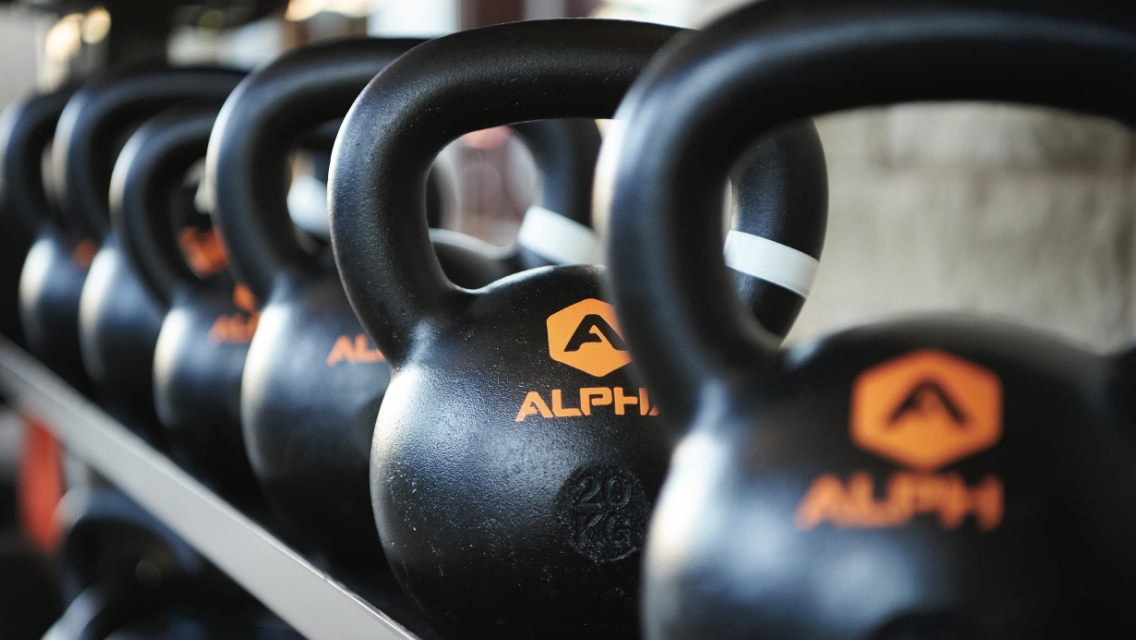Following a well-designed, appropriate strength-training program is one of the most transformational things you can do for your body and health. But sometimes, it’s hard to know where to start or channel your focus.
As a result, almost any fitness professional will tell you that one of the most commonly asked questions they get about strength training is, “Should I do total-body workouts or split my routine up?”
The answer is usually “it depends,” as there is a time and a place for both approaches. Let’s dig in.
Defining Total Body vs. Split When it Comes to Exercise
When doing a total-body routine, you’re engaging in a full-body workout that involves most, if not all, of the major muscles in the body from head to toe. Key muscle groups such as the chest, back, shoulders, glutes, quads, and hamstrings are trained in these workouts. If time permits, sometimes smaller muscle groups — such as biceps, triceps, and calves — are included as well.
Splits divide the body into either sections or parts, movement patterns, or specific muscle groups.
An example of a split dividing the body into sections or parts would be an upper-body/lower-body split. This means the body is split into two different parts, in this case the upper and lower halves. On one day you would train only the muscles of the upper body, and then work the muscles of the lower body the other day.
An example of a movement pattern split would be training with upper-body exercises that move in the horizontal direction on one day (think of a seated row, standing chest press, cable fly, etc.). The second day, leg exercises could be trained using hinge or squat movements. On the third day, exercises that move in the vertical direction (overhead shoulder presses, side raises, pulldowns, etc.) would be used.
Lastly, split routines can focus on muscle groups, with an emphasis on one to three muscle groups per session. An example of a muscle group split would be the following:
- Monday: Chest
- Tuesday: Back
- Wednesday: Shoulders
- Thursday: Legs
- Friday: Arms
Total-Body Workouts
The Pros:
- They are great for people who only have two to three days per week that they can train. (This can be a really useful approach during heavy travel times.)
- They work well for people who don’t have time to do cardio outside of their training sessions.
- They usually burn more calories than training split workouts do because more and larger muscle groups are trained.
- They decrease the chance of having muscle imbalances as most, if not all, major muscle groups get trained.
- They work well for those starting fitness programs as these people don’t need lots of exercises to target each muscle group.
The Cons:
- There are a number of impacts due to time constraints:
- They are usually the longest workouts to do because so many muscles are being trained.
- It’s difficult to increase training volume (total amount of work being done) over time without extending the duration of the workout, which might take too long depending on your schedule.
- Usually no more than three sets of each movement can be used due to time limitations.
- A muscle and/or movement pattern that needs special attention (for aesthetics, weakness, or injury) might not get the needed work due to a lack of time.
- They can increase the potential of overtraining and poor recovery, as lots of work is being done each session. Training the same large muscle groups on consecutive days can have a negative impact on recovery in some people.
- Some people find these workouts to be boring as most of the exercises are basic.
Bottom line: While total-body workouts might be longer in duration and demand a lot of your body in each session, fewer training days per week are needed. These routines are designed to be more general, hitting larger muscle groups without specific focus areas.
Training Splits
The Pros:
- Splits allow you to use multiple exercises and do several sets for each muscle group. As a result, people who have more training experience can benefit from them as more time and sets are needed to keep making progress.
- People who can and want to train more frequently during the week on a consistent basis can gain value from splits, since the workout duration can be shorter than total-body exercises.
- If certain muscle groups need more individual work, training splits are often needed.
- You can train on consecutive days with minimal negative impact on recovery due to different muscle groups being trained on different days.
- These workouts allow additional time for cardio and core work to be done since they often take less time than total-body workouts.
The Cons:
- People usually have good intentions to do more workouts, but may end up skipping one or two, meaning muscle groups are often missed. There’s a common stereotype that men frequently miss leg days but stay consistent with arm days.
- Training splits can cause muscle imbalances if some muscles are trained more consistently than others. For example, people often train muscles they can see (such as the chest, shoulders, arms, and quads) more than muscles they cannot see (such as the back, hamstrings, glutes, and calves).
- The total calorie burn usually isn’t as high as total-body workouts as fewer muscle groups are trained.
Bottom Line: Split routines allow you to hit each muscle group a bit more, but this might allow for some imbalances to develop. Since each workout is shorter, more sessions are required each week to balance out your exercise approach.
Which one is best?
Depending on your goals, experience, and schedule, total-body workouts, splits, and combinations of both might be used in your routine at different times.
When to use total body:
- You have limited time to train. If you struggle to get to the club more than two to three times per week, it makes sense to use total-body workouts.
- Your primary goal is fat loss. Total-body workouts can be really effective for this goal as they burn more calories than splits do.
- You’re a strength training novice. If you’re new to strength training, total-body workouts can be highly effective as they reinforce crucial movement patterns, which are important for your nerves and muscles to get used to as you advance in your fitness. Plus, those newer to strength training don’t need as much training volume initially.
When to use training splits:
- You have no trouble working out four or more times per week. Since multiple weekly sessions are needed to hit all body parts, frequent sessions are a must.
- Your primary goal is muscle gain or strength. Building muscle and increasing strength demand and require more training volume, meaning there needs to be a high number of exercises per muscle group and a high number of sets of each exercise performed.
- You have experience with strength training. If you’ve been lifting consistently for more than two years, larger volume is needed to see continued progress and results.
How to Use Both Approaches
One opportunity that is often missed by many fitness enthusiasts is that they think they can only do one approach or the other. However, there is no reason why both can’t be used if needed.
Here are 12 different examples of various ways you can use total-body workouts, training splits, or a combination of both over the course of a week.
| Workout Option | Monday | Tuesday | Wednesday | Thursday | Friday | Saturday | Sunday |
| 2X/Week Total Body | Total Body | Total Body | |||||
| 3X/Week Total Body | Total Body | Total Body | Total Body | ||||
| *3-Day Training Split | Upper Body | Lower Body | Upper Body | ||||
| **3-Day Training Split | Upper Body (Vertical) | Lower Body | Lower Body (Horizontal) | ||||
| ***3-Day Training Split | Back and Biceps | Legs | Chest, Shoulders, and Triceps | ||||
| *4-Day Training Split | Lower Body | Upper Body | Lower Body | Upper Body | |||
| **4-Day Training Split | Lower Body (Hinge) | Upper Body (Vertical) | Lower Body (Squat) | Upper Body (Horizontal) | |||
| ***4-Day Training Split | Chest and Triceps | Back | Legs | Shoulders and Biceps | |||
| ***5-Day Training Split | Chest | Back | Shoulders | Legs | Arms | ||
| 3-Day Hybrid | Upper Body | Lower Body | Total Body | ||||
| 4-Day Hybrid | Upper Body | Lower Body | Total Body | Total Body | |||
| 4-Day Hybrid | Upper Body (Vertical) | Lower Body | Upper Body (Horizontal) | Total Body | |||
| *Represents a Body Section or Part Training Split
**Represents a Movement Pattern Training Split ***Represents a Muscle Group Training Split |
|||||||
Cycling through each approach in eight- to 12-week blocks is often what’s needed at different stages in your exercise journey. No matter which path you choose, know that consistent strength training is worth your time and effort in the long run — for your health, metabolism, and more. Use the guidelines above to help shape your approach so that it’s effective, enjoyable, and designed to drive the results that are most meaningful to you.




